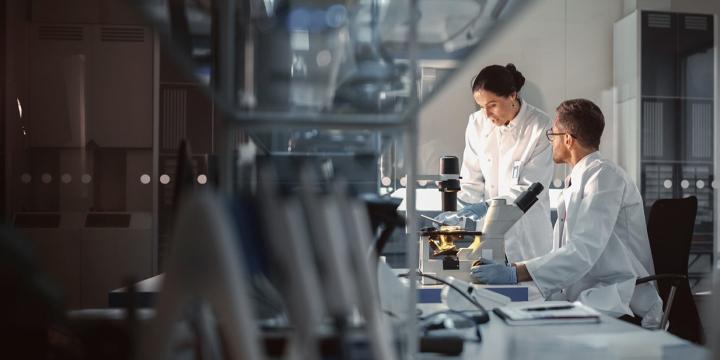If a doctor said you had three years to live, what would run through your mind?
For Mel Mann, the thought was instantaneous. It was of his daughter, Patrice, who was 5 years old at the time.
“I was in shock. My first thought was that my daughter would be 8 when my time was up,” recalls Mann.
That was all the motivation he needed to exhaust every option in overcoming his diagnosis.

In 1995, Mann had been dealing with excruciating, consistent back pain while working in research and development as a U.S. Army officer near Detroit. Thinking it was a herniated disk, he sought medical treatment, eager to put a stop to the pain. A series of tests, including an MRI, showed that his bone marrow appeared abnormal for a man of his age.
A blood test ultimately confirmed Mann’s diagnosis: chronic myeloid leukemia (CML). He was 37 years old.
“The doctor explained that my best chance at beating leukemia was to find a bone marrow match from a close family member,” Mann says. “But none of my relatives were a match. My next option was to add my name to the national bone marrow registry, but at the time, African Americans had a 1% chance of finding a match because there were so few donors available. I asked him if there was anything else I could do, like diet or exercise. He said no—my best chance at living would be to find a donor.”
Because of his diagnosis, he was released from his duties as an officer and placed on medical retirement. Mann was then able to dedicate even more of his time to hosting marrow drives, one of which was attended by a stranger who arrived with a message for Mann.
“He saw a promotion for the marrow drive on TV and took it upon himself to come all the way to help me,” Mann says. “He told me he had hairy cell leukemia, which is a different form of cancer than mine, and had entered into clinical trials to try experimental drugs. It turned his life around. I called his doctor and asked how I could get involved right away.”
Mann became one of the first trial patients for Imatinib mesylate, or Gleevec, a chemotherapy drug that inhibits the protein that allows cancerous CML cells to grow and multiply. Today, more than three decades after his initial diagnosis, Mann is not just surviving but thriving. He is the longest Gleevec survivor with CML in the world.
It was this experience that transformed Mann into a passionate advocate for clinical trial participation and accessibility. In fact, he is one of 10 people to join the inaugural Walgreens Clinical Trials Patient Advisory Board. Mann and his fellow board members will provide ongoing counsel, enriched thinking and expertise to inform Walgreens Clinical Trials efforts. For example, advisory board members are reviewing clinical trial content and materials to make sure they are culturally relevant and easy to understand. Board members are also participating in community engagement events across the country, among other activities, aimed at bridging common gaps in clinical research.
“The knowledge Mel has from his own clinical trial experience is invaluable,” says Ramita Tandon, chief biopharma services officer at Walgreens. “The lived experiences from Mel and our other board members will help us continue to improve our clinical trials to bring these trials to patients faster.”
Mann, who continues to take Gleevec, says he has picked up his medications from his local Walgreens for years. With Walgreens now involved in recruiting patients for sponsor-led clinical trials, he is hopeful about improving accessibility and breaking down common barriers like lack of awareness, transportation and language.

“The biggest need is bringing the clinical trial closer to the patient," Mann says, describing the financial and logistical burdens of traveling across states for his own trial, including transportation and accommodation costs.
He added that improving accessibility could significantly boost participation rates, especially among underrepresented communities, Mann says: “If you can bring trials closer to patients’ communities, there'll be a greater chance for inclusion."
Another thing Mann always picks up at his Walgreens: his daughter Patrice’s favorite treat, Nice! brand gummy Peach Rings. Patrice has quite the story herself. A medical school graduate, she now works in Atlanta as a psychiatrist in private practice and is also involved in clinical trials. After accompanying her father on clinical trial trips and dozens of marrow drives, plus enduring the marrow donor test to see if she could be a match, Mann can’t help but think his journey might have inspired her career.
“She likes to help people,” Mann says. Like father, like daughter.




